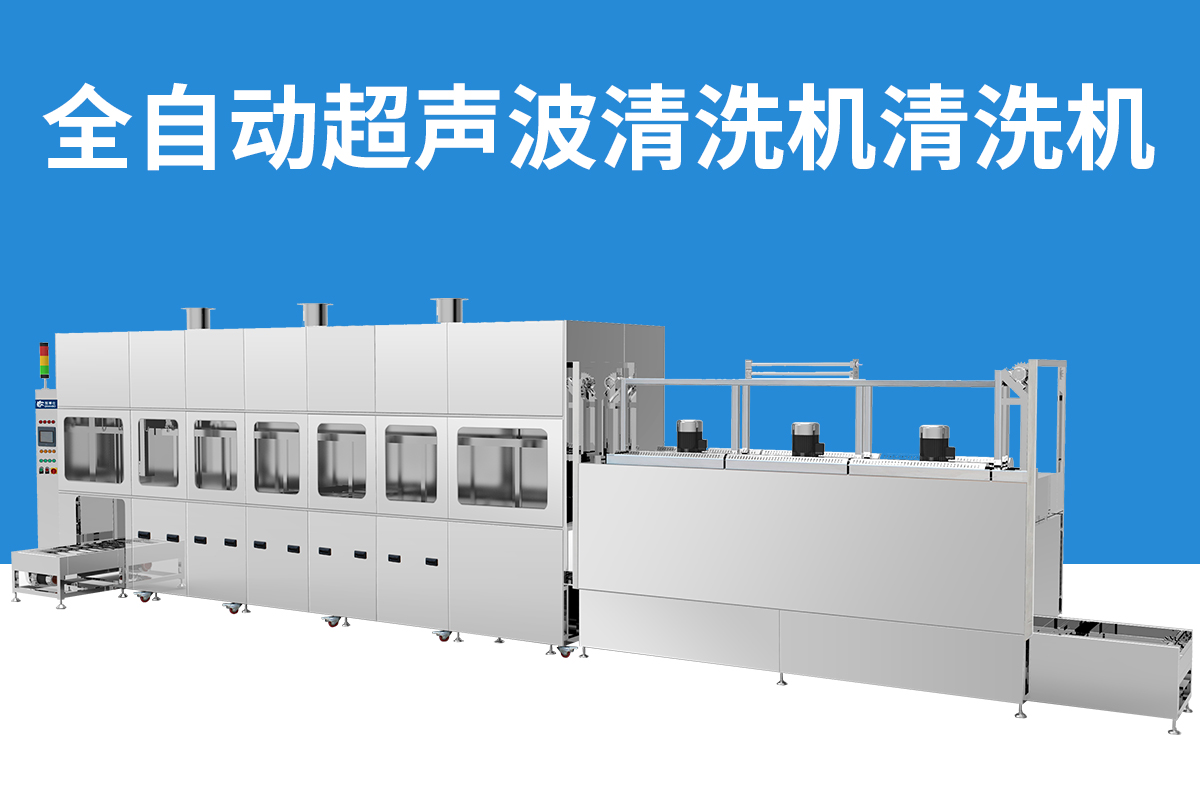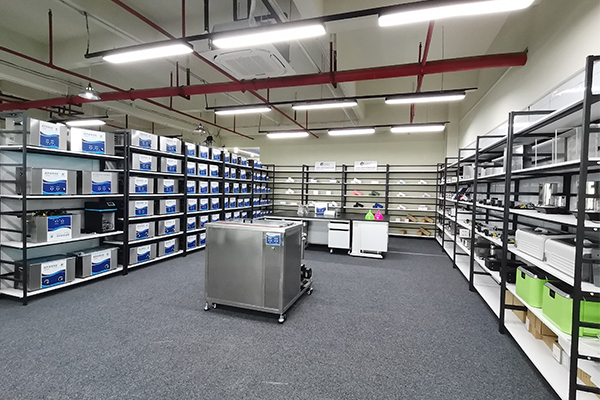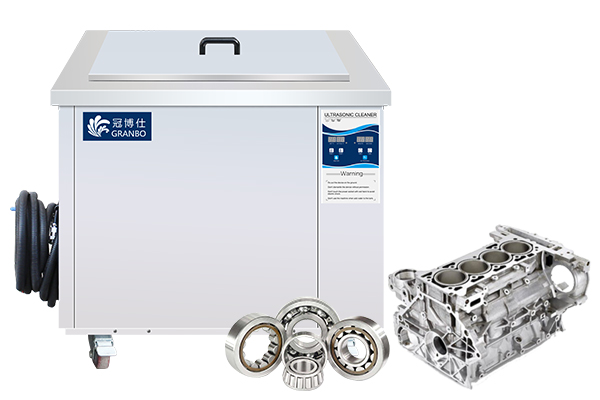In the modern large-scale optical processing industry, ultrasonic cleaning technology to its clean, clean fast, and save a lot of manpower, material resources and widely used.
Ultrasonic cleaning machine working principle
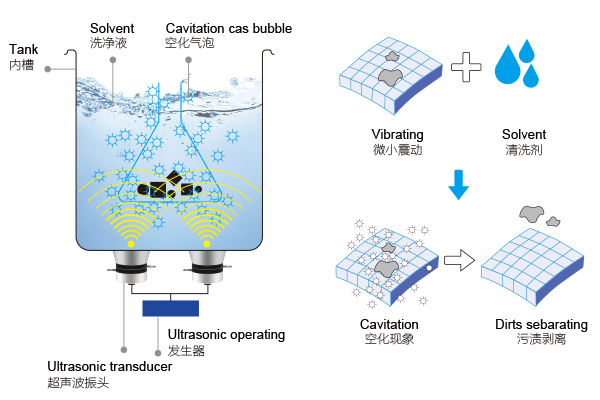
In the liquid propagation of ultrasonic waves can clean the surface of the object dirt, the principle can be used to explain the phenomenon of “cavitation”: ultrasonic vibration in the liquid to reach an atmospheric pressure of the sound wave pressure, the power density of 0.35w/cm2, when the peak of the ultrasonic wave pressure can reach a vacuum or negative pressure, but in fact No negative pressure exists, so a large force is generated in the liquid, the liquid molecules will be pulled apart into a cavity – cavitation nucleus. This cavity is very close to the vacuum, it is in the ultrasonic pressure reverse to the maximum rupture, due to the rupture and the strong impact will be the object surface dirt impact down. This rupture of countless tiny cavitation bubbles and the resulting shock wave phenomenon called “cavitation” phenomenon.
Factors affecting the ultrasonic cleaning.
1、ultrasonic power
Ultrasonic power that we often say the total power of the ultrasonic shock, generally in accordance with the power of a single shock * the number of shock to calculate. Power affects the strength of ultrasonic cleaning, strong cleaning effect will naturally be better, but not the stronger the better, because too strong may corrode the product, or damage, so the power of the ultrasonic cleaning machine can be based on the products you want to clean to damage the choice, if customized, according to the standard to strengthen, or weaken.
2、Ultrasonic frequency
Commonly used ultrasonic frequency spinning between 20-100KHZ, the lower the frequency, the larger the resulting bubble, the greater the force generated by the blast, the higher the frequency, the smaller the resulting bubble, the smaller the force generated by the blast, so the low frequency cleaning surface effect to be better, high frequency cleaning slit, blind hole effect to be better, can be selected according to the actual situation
3、Cleaning blue
In the use of the net blue, because the mesh to cause ultrasonic attenuation, to pay special attention. When the frequency is 28khz when using more than 10mm mesh is good.
4、Choose the temperature of the cleaning solution
Water cleaning fluid suitable for cleaning temperature of 40-60 ℃, especially in the cold if the cleaning fluid temperature is low cavitation effect is poor, cleaning effect is also poor. Therefore, some of the cleaning machine in the cleaning cylinder around the outside of the heating wire for temperature control, when the temperature rises cavitation is easy to occur, so the cleaning effect is better. When the temperature continues to rise after the gas pressure within the cavitation bubble increases, causing the impact sound pressure decreases, reflecting the multiplicative effect of these two factors.
5、on the amount of cleaning fluid and the location of the cleaning parts to determine
General cleaning fluid level above the surface of the vibrator more than 100mm is good. Due to the single frequency cleaning machine by the impact of standing wave field, the wave section at the amplitude is very small, the wave amplitude at the amplitude caused by uneven cleaning. Therefore, choose the location of cleaning items should be placed at the wave amplitude.
Ultrasonic cleaning machine application range.
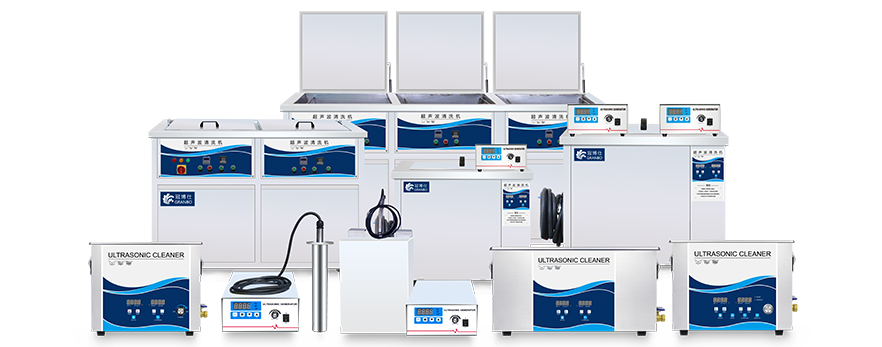
1, machinery industry: the removal of anti-rust grease; mold cleaning; mechanical parts of the oil and rust removal; engine, carburetor and car parts cleaning; filter, filter unclogging cleaning, etc. The rust removal, oil removal and rust prevention for each part of the train head is very suitable.
2, surface treatment industry: oil and rust removal before electroplating; cleaning before ion plating; phosphate treatment; removal of carbon; removal of oxidation skin; removal of polishing paste; metal workpiece surface activation treatment, etc.
3、Watch and jewelry industry: remove oil sludge, dust, oxide layer, polishing paste, etc.
4, the electronics industry: printed circuit boards in addition to rosin, solder spots; high-voltage contacts and other mechanical and electronic parts of the cleaning, etc.
5, optical industry: optical devices to remove oil, sweat, dust, etc.
6、Semiconductor industry: high cleanliness cleaning of semiconductor wafers.
7, petrochemical industry: the cleaning and dredging of metal filters, chemical containers, exchangers cleaning, etc.
8、Chemical and biological industries: the cleaning and descaling of experimental vessels.
9, medical industry: cleaning of medical devices, disinfection, sterilization, cleaning of laboratory vessels, etc.
10, textile printing and dyeing industry: cleaning of textile spindle, spinneret, etc.
11, instrumentation industry: cleaning of precision parts before high cleanliness assembly, etc.
12、Other: light-sensitive material manufacturing, papermaking, certain food field of liquid defoaming, degassing, etc.

